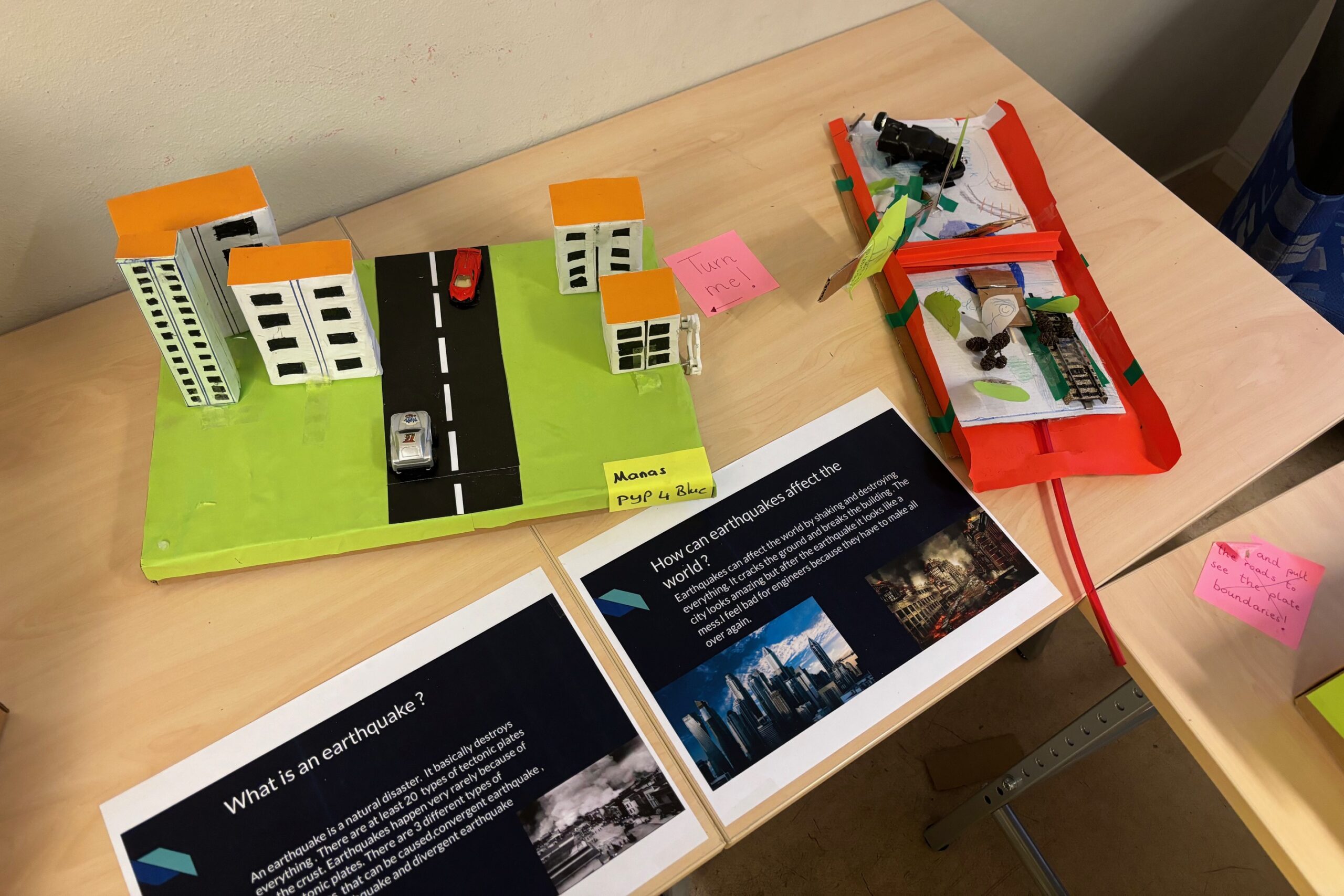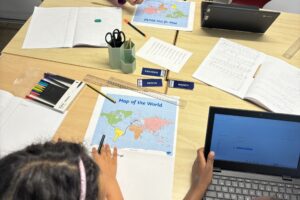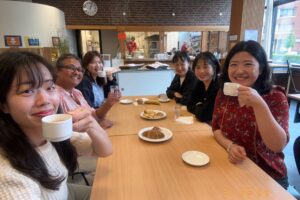
Exploring Natural Forces with Experiments and Models
By Burcum Kesen
As part of our How the World Works Unit, PYP4 has been exploring the natural forces that change the surface of the Earth. To tune in to our new unit, we have simulated the aftermath of an earthquake in our classrooms in an attempt to immerse students in a tangible representation of the consequences of earthquakes as well as to gather what the students already know on the topic. This was a fun way to engage children with the unit.
Tuning in continued with a variety of experiments to model different forces of nature. However, we have not revealed to the children what these experiments represent in order to access any prior knowledge students might have. Creating 4 stations, the experiments focused on volcanoes, earthquakes, weathering and erosion. Playing with hair dryers and sand castles, mini mountains made from sugar cubes and water, students explored how the wind and water impact the earth. Building a tower from wooden blocks and sugar cubes and by moving the table, students made connections to the impact of the tectonic plates. Making a cone to represent a mountain around a bottle of cola and dropping mentos, students explored the volcanic eruptions.
These experiments showed us what our students already knew about the topic and how we could build on that knowledge. We have learned that while students were familiar with volcanoes and earthquakes, they didn’t know what caused them. These experiments were also a great way to engage the children in our new unit. After this experience, students all chose a topic they were interested in and dug deeper into it. Using their research skills, children focused on form and causation as the key concepts and learned more about their chosen natural force, what it is and why it happens. As our unit also focused on responsibility, students were asked to pick a case study and learn about how people respond to natural forces when they become natural disasters.
Each child became an expert on the topic and presented their findings to the class. Part of their assignment was to include a model or an experiment to represent their natural force. It was great to see how some children incorporated the experiments we have done in the beginning of the unit. However, this time, they were able to explain what is being represented and why it happens. It was great to see the children’s learning in action like this.
One of the highlights of the unit was the opportunity for students to showcase their creativity and understanding by constructing models representing various natural forces. Armed with cardboard, glue, string, and other crafting materials, students enthusiastically delved into the task of bringing their ideas to life. We gathered these and held a mini exhibition for the school community to see.
The natural forces unit provided PYP 4 students with a hands-on learning experience. By immersing themselves in the exploration of natural forces and creating models to represent their understanding, students not only deepened their knowledge but also cultivated essential skills such as collaboration, creativity, and critical thinking.





